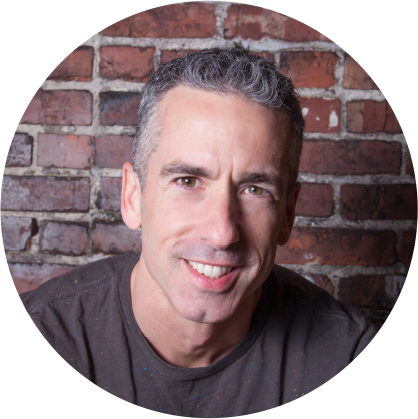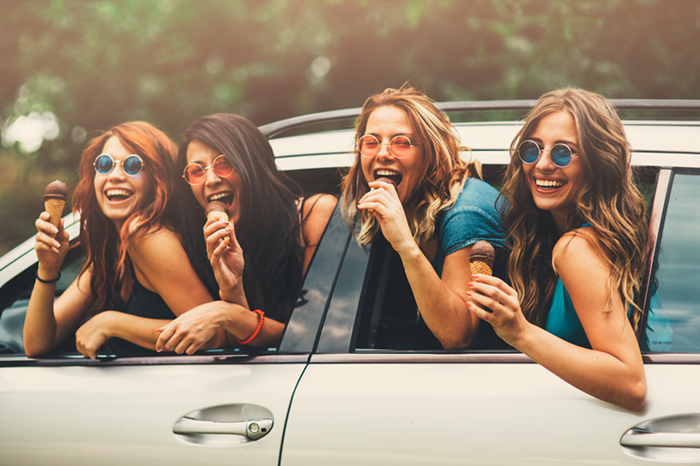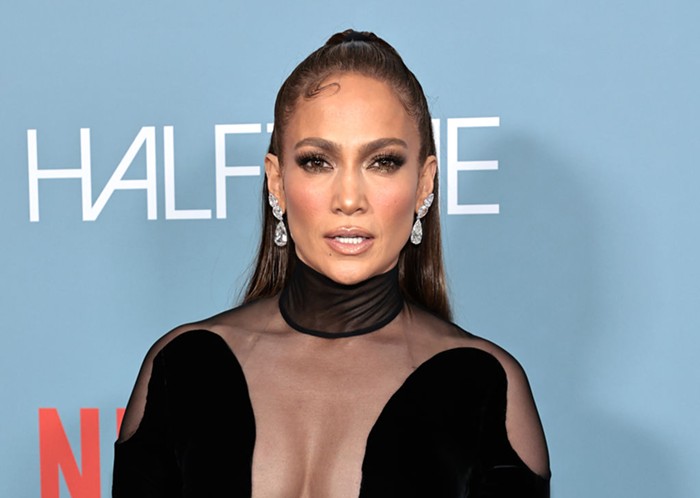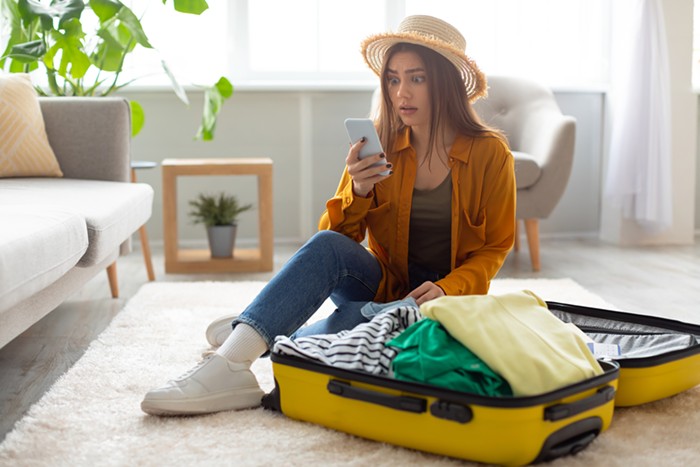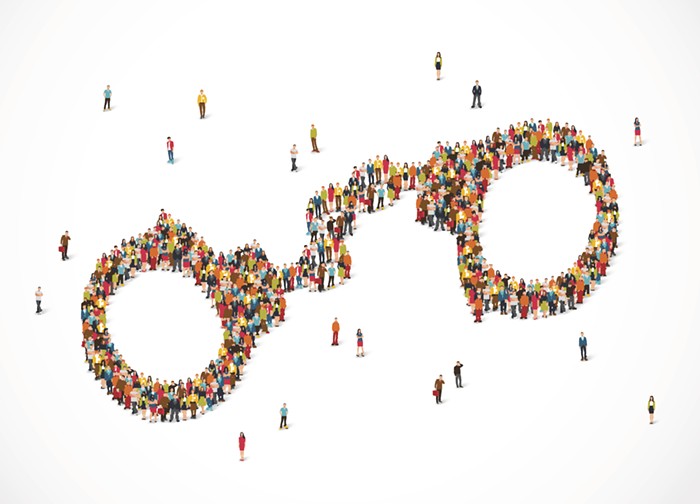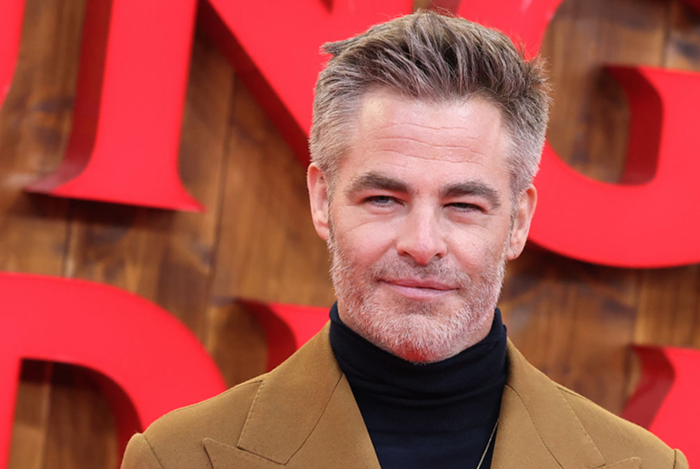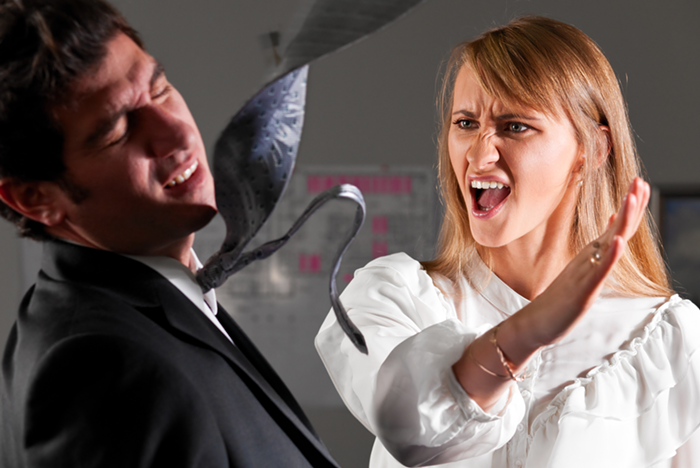One hundred videos.
That was the goal, and it seemed ambitious: 100 videos—best-case scenario, 200 videos—made by lesbian, gay, bisexual, and transgender adults for lesbian, gay, bisexual, and transgender youth.
I was sitting in a hotel room in Bloomington, Indiana, when I began to suspect that we were going to see a lot more than 100 videos. The video that I had made with my husband, Terry, a week earlier—the very first It Gets Better video—had been live on YouTube for just a few hours when the emails and likes and friend requests started coming in so fast that my computer crashed. The second It Gets Better video arrived within 24 hours. Three days later, we hit 100 videos. Before the end of the first week, we hit 1,000 videos.
Terry and I were relieved to learn that we weren't the only people out there who wanted to reach out to LGBT kids in crisis.
Justin Aaberg was just age 15 when he killed himself in the summer of 2010. He came out at 13 and endured years of bullying at the hands of classmates in a suburban Minnesota high school. Justin hanged himself in his bedroom. His mother found his body.
Billy Lucas, also 15, wasn't gay-identified but he was perceived to be gay by his classmates in Greensburg, Indiana. His tormentors threatened him, called him a fag, and urged him to kill himself. Billy hanged himself in a barn on his grandmother's property in September of 2010. His mother found his body.
Reading about Justin and Billy was emotionally crushing—I was particularly outraged to learn that "Christian" parents were blocking efforts to address the rampant anti-gay bullying at Justin's school, claiming that doing so would somehow infringe upon the "religious freedom" of their straight children—and I began to think about the problem of anti-gay bullying.
I was aware of anti-gay bullying, of course. I had been bullied in the Catholic schools my parents sent me to. My husband endured years of much more intense bullying—it's amazing he survived—at the public high school he attended. I knew that many of my LGBT friends had been bullied. But it wasn't something we talked about or dwelled on.
I was stewing in my anger about what had been done to Justin and Billy when I read this comment, left on a blog post I wrote about Billy: "My heart breaks for the pain and torment you went through, Billy Lucas. I wish I could have told you that things get better."
What a simple and powerful truth. Things get better—things have gotten better, things keep getting better—for lesbian, gay, bisexual, and transgender people.
I knew that to be true because things had certainly gotten better for me.
•••
I came to fully understand that I was gay—that I had always been gay—when I was a 13-year-old boy being bullied at a Catholic school on the north side of Chicago. I became increasingly estranged from my parents at a time when I needed them most because I was working so hard to hide who I was from them. Five years later, I found the courage to start coming out. Coming out is a long process, not a single event, and I tested the waters by telling my eldest brother, Billy, before telling my mom or dad. Billy was supportive and it helped me decide to tell my mother, which would be the hardest thing I had yet done in my life. Because coming out in 1982 didn't just mean telling my mother that I was gay. It meant telling her that I would never get married, that I would never be a parent, that my professional life would be forever limited by my sexuality.
Eight years after coming out, I would stumble into a rewarding and unlikely career as a sex-advice columnist, of all things, and somehow leverage that into a side gig as a potty-mouthed political pundit. And 15 years after coming out, I would adopt a son with the love of my life—the man I would marry—and, with him at my side, present my parents with a new grandchild, my siblings with a new nephew.
Things didn't just get better for me. All of the gay, lesbian, bisexual, and transgender adults I knew were leading rich and rewarding lives. We weren't the same people and we didn't have or want the same things—gay or straight, not everyone wants kids or marriage; people pursue happiness in different ways—but we all had so much to be thankful for and so much to look forward to. Our lives weren't perfect. There was pain, heartbreak, and struggle. But our lives were better. Our lives were joyful.
What was to be gained by looking backward? Why dwell on the past?
There wasn't anything we could do about the bullying we had endured in school and, for too many of us, at the hands of our families. And it didn't seem like there was anything we could do about all the LGBT kids who were currently being bullied.
A bullied gay teenager who ends his life is saying that he can't picture a future with enough joy in it to compensate for the pain he's in now. Justin and Billy—and, as that terrible September ground on, Seth and Asher and Tyler and Raymond and Cody—couldn't see how their own lives might get better. Without gay role models to mentor and support them, without the examples our lives represent, they couldn't see how they might get from bullied gay teenager to safe and happy gay adult. And the people gay teenagers need most—their own parents—often believe that they can somehow prevent their children from growing up to be gay (or from ever coming out) by depriving them of information, resources, support, and positive role models. (Justin Aaberg's parents knew he was gay and were supportive.)
That fall, as I thought about Justin and Billy, I reflected on how frequently I'm invited to speak at colleges and universities. I address audiences of gay and straight students, and I frequently talk about homophobia and gay rights and tolerance. But I don't get invited to speak at high schools or middle schools, the places where homophobia does the most damage. Gay kids trapped in middle and high schools would benefit from hearing from LGBT adults—lives could be saved—but very few middle or high schools would ever invite gay adults to address their student bodies. Acknowledging the existence of LGBT people, even in sex-ed curriculums, is hugely controversial. A school administrator who invited a gay adult to address an assembly before there was a crisis—before a bullied gay teenager took his own life—would quickly find herself in the crosshairs of homophobic parents and bigoted "Christian" organizations.
It couldn't happen—we would never get permission.
•••
I was riding a train to JFK Airport when it occurred to me that I was waiting for permission that I no longer needed. In the era of social media—in a world with YouTube and Twitter and Facebook—I could speak directly to LGBT kids right now. I didn't need permission from parents or an invitation from a school. I could look into a camera, share my story, and let LGBT kids know that it got better for me and it would get better for them, too. I could give 'em hope.
But I didn't want to do it alone. I called Terry from the airport and tentatively explained my idea for a video outreach campaign. I wanted to encourage other LGBT adults to make videos for LGBT kids and post them to YouTube. I wanted to call it the It Gets Better Project. And I wanted us to make the first video together, to talk about our lives together, to share our joy.
This was a big ask. Terry doesn't do interviews, he doesn't allow cameras in our home, he has no desire to go on television. But he said yes. My husband was the first person to recognize the power of this idea.
The second person to recognize it was our good friend Kelly O, a straight friend and a supremely talented photographer and filmmaker.
She had just one question: "When can we shoot it?"
We did two takes. The first one was a long, depressing video that we shot against a bare wall in our dining room. It looked like a hostage video, and we both talked too much about the bullying we'd endured in high school. We watched the video and shook our heads. Kids who are currently being bullied don't need to be told what bullying looks and feels like. Kelly packed up her camera and we went to a friend's bar and tried again. This time, Kelly peppered us with questions/suggestions: Share a happy memory. How did you two meet? What would you tell your teenage self? Are you happy to be alive?
Kelly edited the video, created a YouTube account, and called me when it was live.
Four weeks later, I got a call from the White House. They wanted me to know that the president's It Gets Better video had just been uploaded to YouTube.
My computer crashed a second time.
•••
The It Gets Better Project didn't just crash my computer, it brought the old order crashing down. By giving ourselves permission to speak directly to LGBT youth, Terry and I gave permission to all LGBT adults everywhere to speak to LGBT youth. It forced straight people—politicians, teachers, preachers, and parents—to decide whose side they were on. Were they going to come to the defense of bullied LGBT teenagers? Or were they going to remain silent and, by so doing, give aid and comfort to the young anti-gay bullies who attack LGBT children in schools and the adult anti-gay bullies at conservative "family" organizations who attack LGBT people for a living?
The culture used to offer this deal to lesbian, gay, bisexual, and transgender people: You're ours to torture until you're 18. You will be bullied and tormented at school, at home, at church—until you're 18. Then you can do what you want. You can come out, you can move away, and maybe, if the damage we've done isn't too severe, you can recover and build a life for yourself. There's just one thing you can't do after you turn 18: You can't talk to the kids we're still torturing, the LGBT teenagers being assaulted emotionally, physically, and spiritually in the same cities, schools, and churches you escaped. And if you do attempt to talk to the kids we're still torturing, we'll impugn your motives, we'll accuse you of being a pedophile or pederast, we'll claim you're trying to recruit children into the "gay lifestyle."
That was the old order, and it fell apart when the It Gets Better Project went viral. Suddenly, gay, lesbian, bisexual, and transgender adults all over the country—all over the world—were speaking to LGBT youth. We weren't waiting for anyone's permission anymore. We found our voices. And LGBT adults who made videos for the project weren't just talking at LGBT youth. The kids who watched videos sent emails, via YouTube, to the adults posting them. Thousands of LGBT adults who thought they were just going to contribute a video found themselves talking with LGBT youth, offering them not just hope but advice, insight, and something too many LGBT youth lack—the ear of a supportive adult who understands what they're going through.
Soon, straight people—politicians and celebrities—were talking to LGBT youth, too, delivering the same message: It gets better, there's nothing wrong with you, and we're working to make it better. LGBT kids could see that the world was full of people like our friend Kelly—loving, supportive, progressive straight people. And as a capstone—living proof—that things were indeed getting better, "don't ask, don't tell" was finally repealed. Days later, Joe Biden, who also made an It Gets Better video, would go on television and describe marriage equality—marriage rights for lesbian and gay couples—as an inevitability.
Things are getting better before our very eyes.
•••
I do want to acknowledge what the It Gets Better Project can't do, though. It can't do the impossible. It won't solve the problem of anti-gay bullying, everywhere, all at once, forever, overnight. The point of the project is to give despairing LGBT kids hope. The point is to let them know that things do get better, using the examples of our own lives. For some people, things get better once they get out of high school; for others, things get better while they're still in high school. And there are brave, out LGBT kids in high schools and middle schools all over the country who are helping to make things better—for themselves and their peers—in their schools today.
Nothing about letting LGBT kids know that it gets better excuses or precludes us from pressing for the passage of the Student Non-Discrimination Act, demanding anti-bullying programs in all schools, confronting bigots who are making things worse for all kinds of kids, and supporting the work of the Trevor Project, GLSEN, and the American Civil Liberties Union LGBT Youth and Schools program. (Indeed, the It Gets Better Project has raised tens of thousands of dollars for these organizations.) But we're not going to get legislation passed this instant and it will be years before we get anti-bullying programs and Gay-Straight Alliances into all public schools, and we may never get them into the private evangelical schools where they're needed most.
In the meantime, while we work to make our schools safer, we can and should use the tools we have at our disposal right now—social media and YouTube and digital video and the recently published It Gets Better book—to get messages of hope to kids who are suffering right now in schools that do not have Gay-Straight Alliances and to kids whose parents bully and reject them for being lesbian, gay, bisexual, or transgender. There's nothing about the It Gets Better Project—nothing about making a video or sharing one—that prevents people from doing more. We've heard from thousands of people who were inspired to do more after making or watching a video.
A few weeks after we launched the It Gets Better Project, this letter arrived for me and my husband:
"Thank you for the It Gets Better Project. My son is 14 and a sophomore in high school in rural Kentucky. He isn't athletic. He isn't religious. He isn't in ROTC. He is constantly being called 'gay' or 'faggot,' oftentimes by the people he thought were his friends... So far, it hasn't gone beyond name calling, but I worry. I showed him your site the day it went live. He sat down and watched the video that you and Terry put up. Since then, I have seen him checking the site out on his own. I don't know if he is gay, but I do know that your message has touched him. Although he does confide that four years is still a long time to wait for things to get better. I think that seeing so many other people say the same thing holds much more weight than having his mother tell him. So thank you again for sharing."
Four years is a long time to wait. So let's all commit to making things better right now, let's all do what we can to create a world where no child, gay or straight, is bullied for being different.
We don't live in that world yet. There are children out there who are being bullied every day, and while gay, lesbian, bisexual, or transgender children aren't the only kids dealing with this harassment, they are often more isolated, more alone, and more at risk.
Nine out of 10 LGBT students report experiencing bullying in their schools; LGBT teenagers are four to seven times likelier to attempt suicide. LGBT children who are rejected by their families are eight times likelier to attempt suicide and are at a much higher risk of winding up homeless and living on the streets.
If you know a child who's being bullied for being gay or perceived to be gay—particularly if you know a child who isn't lucky enough to have a mother like the one who wrote to us—you can help that child find hope by helping them find their way to the It Gets Better book and the It Gets Better Project website (itgetsbetter.org), with more than 10,000 videos and counting.
Do your part. Give 'em hope.
This essay is adapted from the introduction to It Gets Better: Coming Out, Overcoming Bullying, and Creating a Life Worth Living edited by Dan Savage and Terry Miller, published by Dutton. Contributors include Barack Obama, Ellen DeGeneres, Jake Shears, Alison Bechdel, David Sedaris, Ellen Forney, and many others.

